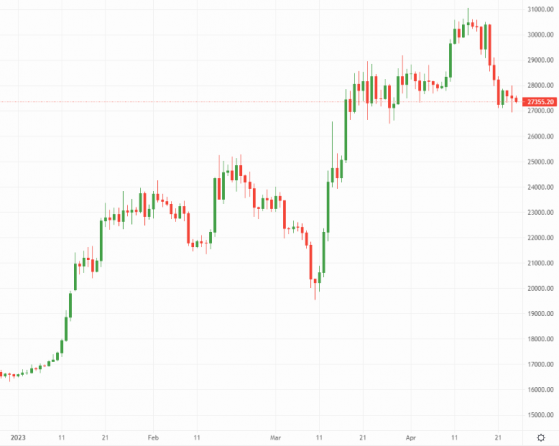Venture capitalist and Crypto Twitter mainstay Chamath Palihapitiya reckons regulators have driven a nail in the US crypto economy through the regulation-by-enforcement approach favoured by the Securities and Exchange Commission (SEC) under crypto permabear Gary Gensler.
“Crypto is dead in America,” Palihapitiya exclaimed in a recent All-In podcast episode. He’s far from the only one voicing such an opinion. Even US lawmakers have criticised Gensler’s approach.
“Regulation by enforcement is not sufficient nor sustainable,” House Financial Services Committee Chairman Patrick McHenry warned Gensler in a four-hour testimony last week.
“You’re punishing digital asset firms for allegedly not adhering to the law when they don’t know it will apply to them… driving innovation overseas and endangering American competitiveness,” McHenry added.
While much has been said about the US regulators’ hawkish approach to the industry, particularly against the cryptocurrency exchanges that act as fiat-to-crypto onramps, policymakers in Europe and the UK have been attempting to woo the burgeoning industry with new regulatory frameworks.
What do the markets think about this?
Bitcoin has definitely softened by late. Monday’s session was an uneven one, as bulls and bears jostled between US$26,900 and US$28,000, ultimately closing 0.3% lower at US$27,500.
This morning’s Asia trading window has seen more downside to around the US$27,350 mark, bringing week-on-week losses on the BTC/USDT pair to nearly 8%.
Is bitcoin (BTC) in correction mode? – Source: currency.com
Long-bitcoin futures saw over US$50mln of outflows last week. Notably, US$22mln of these outflows came from US investors, though Canada led the way with US$32mln in outflows.
Given how bitcoin remains over 65% higher year to date, while Ethereum (ETH) remains over 50% higher, amid a full four months of intense regulatory pressure, there should not be too much stock put on the headwinds caused by the pesky SEC.
Bitcoin and Ethereum’s strong performance in recent months was seen as a response to turmoil in the traditional financial sector, with investors chasing down safe-haven assets to park their money. Gold of the digital and physical variables was seen as the best bet.
Thus the correction in the safe-haven markets seen lately shouldn’t have come as a surprise as things in the TradFi market turmoil receded. After all, it could have been worse if the greenback wasn’t also on a downward trajectory.
There’s a likelihood of BTC/USDT trending somewhere around the 27k to 28k channel – a favoured position in recent months – until the May 3 interest rate decision from the Federal Reserve provides some clarity.
ETH/UDST is currently trading just above US$1,800, having dipped 1.5% in the Asia market.
On a weekly basis, the second-largest cryptasset by market capitalisation has underperformed against bitcoin, having dropped close to 14%.
Altcoins underperform
As has been the theme throughout 2023, the blue-chip altcoin space has largely underperformed against the bitcoin benchmark this week.
Polygon (MATIC) and Solana (SOL) are particularly bearish, with losses in the high teens, followed by Cardano (ADA), Dogecoin (DOGE) and Polkadot (DOT).
Lower down the value scale, the Bitfinex exchange’s LEO token steered ahead recently, adding close to 4% in the past seven days.
LEO’s surge to a market capitalisation of US$3.3bn coincided with the launch of Bitget’s BGB token on the Bitfinex exchange.
Ethereum Layer-2 scaling solution Arbitrum (ARB) has borne the brunt of ETH short-term correction, remaining the worst performer among the top-100 altcoin set with over 25% in losses in the past seven days.
Global cryptocurrency market capitalisation fell 0.8% to US$1.15tn overnight, while total value locked in the decentralised finance (DeFi) space fell 1.3% to US$48.2bn overnight.
Read more on Proactive Investors AU
